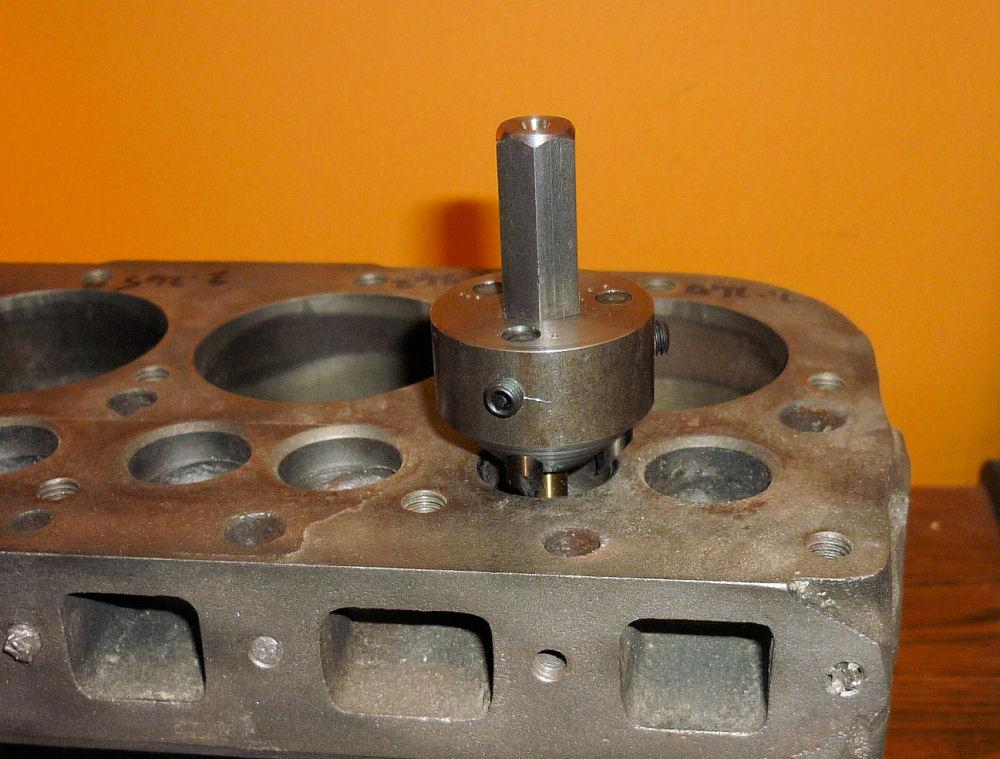Joined: Mar 2015 Posts: 5,196 Threads: 223
Reputation:
59
Location: Scotchland
Very smart Steve, nice work.
Joined: Mar 2018 Posts: 682 Threads: 33
Reputation:
3
Location: Lot region FRANCE
Nice job, a few broken studs as well !! and is that a broken tap in the rearmost manifold hole ?
Joined: Mar 2015 Posts: 5,196 Threads: 223
Reputation:
59
Location: Scotchland
I have removed a number of broken taps, like you have, by shattering them with a sharp punch. Direct hefty whack usually does the trick.
Joined: Aug 2017 Posts: 2,748 Threads: 31
Reputation:
95
Location: Auckland, NZ
These are handy devices but dangerous in the hands of amateurs. Once gone metal cannot be put back. Ideally confined to narrowing seats and cutting for oversize valves.
For decades I ran a Javelin which cars for various reasons are prone to recession, so had to regularly recut for oversize valves etc. I made a simple single cutter version which is operated against a stop.
Valve grinding is now questioned. Any attempt to correct the seat leaves a groove in the valve. I made up a set of shafts with mild steel heads attached. These are selected to close fit in guide and used as laps and regularly set to run true and corrected in the lathe. As with new cars valves then not reground.
Joined: Aug 2017 Posts: 2,748 Threads: 31
Reputation:
95
Location: Auckland, NZ
Hi Charles
Many get hold of these or cruder versions without making.
Most of my observations are aimed primarly at the not too experienced, who seem to make up many of newcomers.
It is very tempting to narrow wide seats by opening out bore but that is usually a mistake.
Considering that the average Seven has had a myriad valve grinds, seats are often surprisingly good.
My car used to burn valves of old time steel every 6,000 or so and I have reports of same from others in the 1940s-50s.
(common James brand exh valves were of VK+ steel, inferior even to XB, and now only used for inlets.)
Joined: Aug 2017 Posts: 390 Threads: 81
Reputation:
0
Location: CALGARY AB CANADA
Once I get the new valve guides pressed in I want to insure that the valve seat is concentric with the guide. A minimal scrape with the tool will tell me that. If it is then fine, I'll just lap the valve in and install. However, a couple of the seats have some pitting which needs to be removed, hence the making of the tool.
Bob, my policy has always been to remove only the minimal amount of material I can get away with that will give me a good seal. If I don't have to use the tool I won't - but yes
i could certainly ruin the seat by aggressive use, giving a recessed valve with masking and a wide seat which is undesirable. Your concern is appreciated and understood.
Stephen










